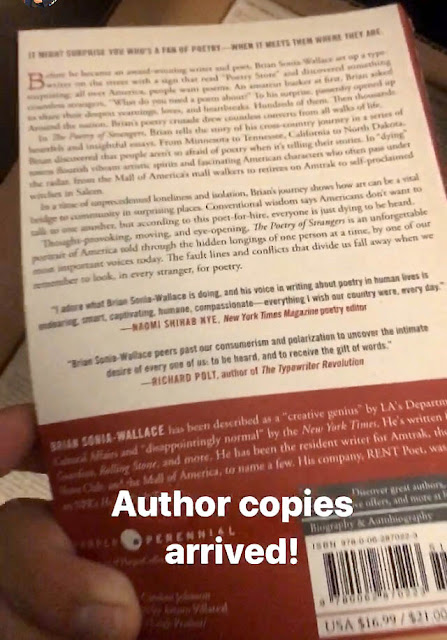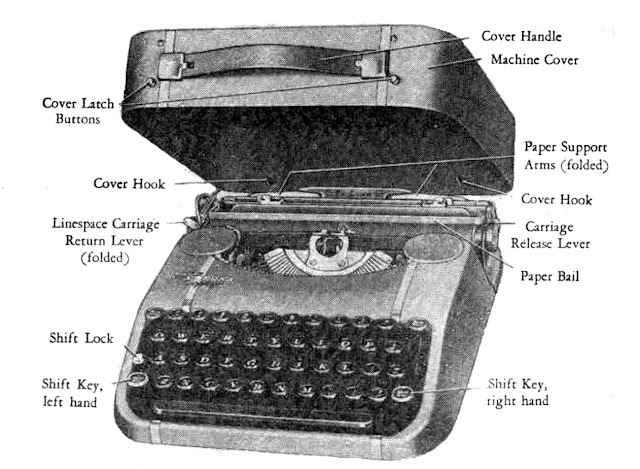Brian Sonia-Wallace appears in The Typewriter Revolution as a member of L.A.'s Melrose Poetry Bureau. (That's him on the right in the upper left photo.)
Brian is also a successful independent street poet. You can learn more about him on Instagram, Facebook, Twitter, and his website.
Now Brian has come out with an inspiring book about his adventures writing poetry for the public.

I got to read an advance copy, and was glad to write a blurb for it:

A bit hard to read, I know. Here is my full blurb, excerpted on the back cover:
Exploring America by road and rail, Sonia-Wallace offers his presence to strangers, typing poems for them and, in turn, learning from them about sex, music, politics, religion, and magic. He peers past our consumerism and polarization to uncover the intimate desire of every one of us: to be heard, and to receive the gift of words.
Here are some of my favorite passages:



Tonight, Brian celebrated the release of The Poetry of Strangers with an online gathering of over 100 friends, family, poets, and 21st-century typists.
Brian with his Remington Rand Model 1
"This incredible typewriter community is [not just] finding new uses for these objects, they're reinventing themselves. ... We are isolated, and people really want to be heard."
And finally, here's a beautiful promotional video for The Poetry of Strangers:
I think every reader of this blog can enjoy Brian's book. Perhaps you'd like to support a local independent bookstore by buying a copy? You can easily do that at IndieBound. It's also available as an audiobook (MP3 or CD).




















